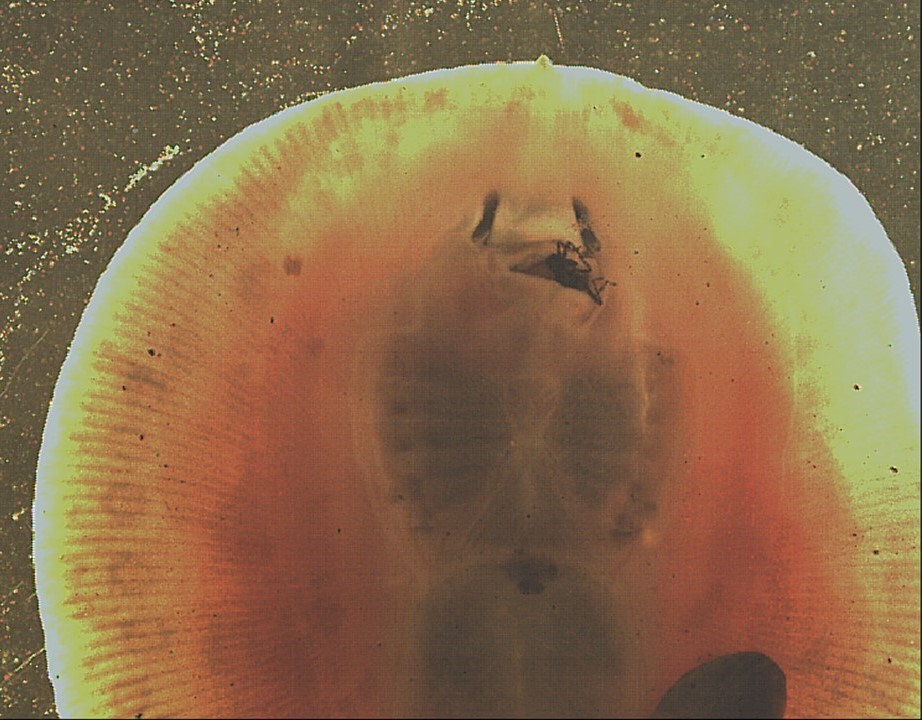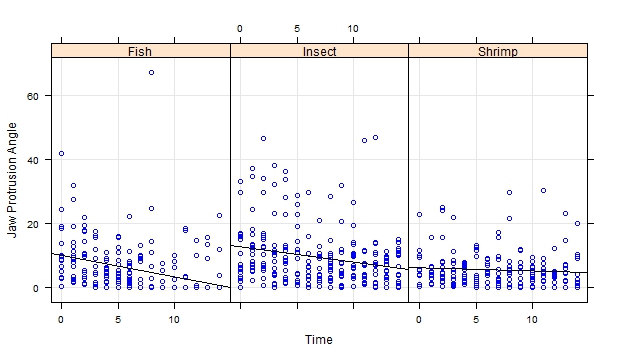My Experimental Protocol - how do we capture rays chewin' on stuff
I use high-speed, or high frame rate, videography to capture the feeding behaviors of stingrays. For a pilot study (soon to be submitted to the Proceedings of the Royal Society) I filmed four individual ocellate river rays (Potamotrygon motoro) feeding on three different kinds of prey: fish, shrimp, and aquatic dragonfly larvae. These prey span the taxonomic and material diversity of food rays encounter in the wild. The calcified chitin of shrimp is stiffer and less tough than insect chitin, meaning that generally, less mineralized stuff can deform more before breaking. For the current project I will be adding thicker-shelled crustaceans (crayfish) and stiffer snails into the mix, too!

For feeding trials, rays are introduced into a filming aquarium and allowed to acclimate. I weigh prey prior to filming so I can later analyze whether prey size has an effect on feeding behavior. The stingrays are filmed at 250 frames/sec while feeding in a 40 gal (~290L) aquarium. High-speed cameras are placed at different angles to one another, surrounding the tank in order capture bottom, side, and front views of feeding behaviors simultaneously. Videos are then converted to frame-by-frame images which I then use a computer program to track the movements of the jaws... image...by image... by image... by image... 
To start off, I tally the total number of bites as well as the duration of feeding for 15 feeding events per prey type. In my pilot study, however, I found that in addition to obvious biting, many strange, motions of the jaws were also observed, even considerable asymmetrical motion. 
These motions reflect internal 'processing' or chewing events that I quantify by calculating how the jaws deviate from a resting state: i.e., I determine how much the jaws move to the left or right, and at what angle they are protruded away from the 'face' of the ray. This asymmetrical jaw motion is how these rays shear their upper and lower jaws against one another - the key to 'shredding' tough prey like insects.
To analyze the data I model how jaw motions correlate with prey type using
linear mixed models (LMM), which account for individual variation as a random
effect - i.e., all individual rays are expected to not be equal in how they chew prey, LMM can account for individual variability in feeding performance.
Since prey are dismantled over time and the ray's alter their feeding behavior
to reflect how well prey are being broken down - I needed to account for these changes. Feeding behaviors change over time, meaning that behaviors closer in time are more similar to one another than expected by chance alone. In order to account for how jaw action changes over time (as prey as progressively more dismantled) I also used time-explicit growth models in a linear mixed model framework. 
- Published on Jun 11, 2016
- 18 views
- 0 comments
- Print this page
- Back to Methods